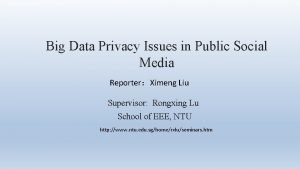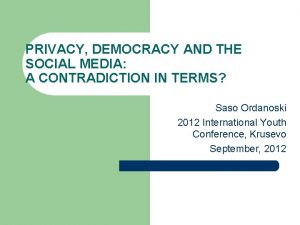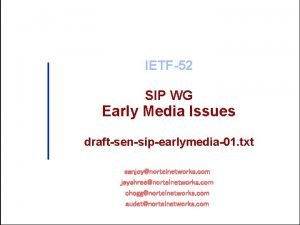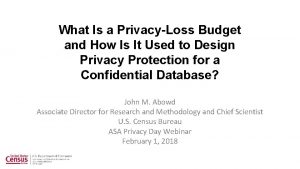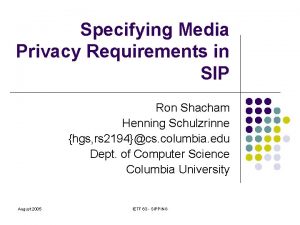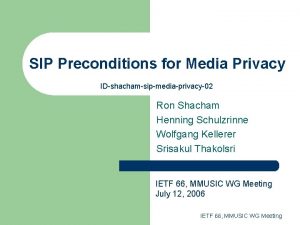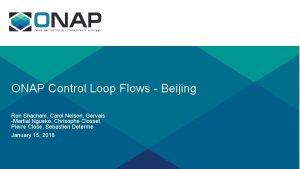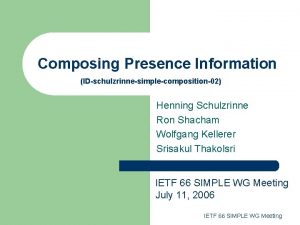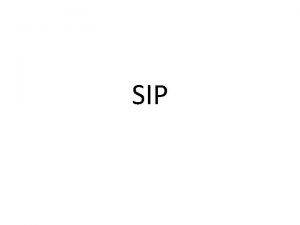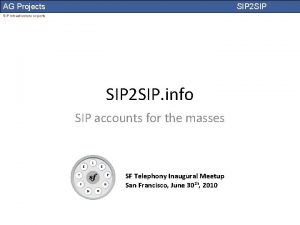Specifying Media Privacy Requirements in SIP Ron Shacham








- Slides: 8

Specifying Media Privacy Requirements in SIP Ron Shacham Henning Schulzrinne {hgs, rs 2194}@cs. columbia. edu Dept. of Computer Science Columbia University August 2005 IETF 63 - SIPPING

Overview l Motivation: l l l Goals: l l Speakerphones, output devices and session mobility can compromise a call participant’s privacy. Unauthorized recording. Allow users to specify privacy demanded from the other device; whether recording of the session is allowed; at call setup and anytime during the call. Scope: While a device may be unable to enforce requirements, they provide clear indication of intent l similar to GEOPRIV embedded handling instructions (distribution and retention) August 2005 IETF 63 - SIPPING

Applications l l l Proxy only routes the call to a device that has the right level of privacy Disallow the other call participant from transferring the call to a public device, turning on his speakerphone, or recording the call Force the other participant’s device to retrieve the session from a public device when the conversation becomes more private August 2005 IETF 63 - SIPPING

Privacy Definitions l l l Privacy levels l 1 = only device user may access the media l 2 = anyone in the device user’s organization (school, company, circle of friends, etc. ) may access the media l 3 = anyone may access the media A device may have multiple privacy levels, based on different settings: l A phone has level 1 when the receiver Is used, level 2 when speakerphone is used. Privacy levels of a device may change based on its surroundings: l If nobody else is in the room, even speakerphone has level 1, but when somebody walks in, it changes to level 2 or level 3. August 2005 IETF 63 - SIPPING

Protocol Extensions—Caller Preferences l New feature preference: privacy l Accept-Contact: *; privacy=1; require l l causes the proxy server to only route the call to a device on which only the user can view or hear The device must respect this level of privacy (e. g. , no speakerphone or transfer to a public device) for the duration of the call, unless it is updated through SDP mechanism August 2005 IETF 63 - SIPPING

Protocol Extensions—SDP Attributes Session-level attributes only l May be used at call setup or in mid-call re-INVITE l Privacy l “a=required-privacy: user” demands that the other device not make media available to anyone besides the user l “a=provided-privacy: user” expresses that no other user has access to the media l When “required-privacy” is used in an offer, the answer must include the “provided-privacy” attribute with a value within the required range. The device must respect this level for the duration of the call, unless it is updated. l Recording l “a=norecord” disallows recording of the session l When used in an offer, answer must also contain this attribute August 2005 value. IETF 63 - SIPPING l

Extension: preconditions l l Use SIP preconditions to establish mutually acceptable media privacy Is this sufficiently useful to be implemented? August 2005 IETF 63 - SIPPING

Open Issues l l l Useful enough? Need “Require” header to ensure that old systems don’t unintentionally pretend that they are honoring the media privacy request “Privacy” “Sharing”? August 2005 IETF 63 - SIPPING





